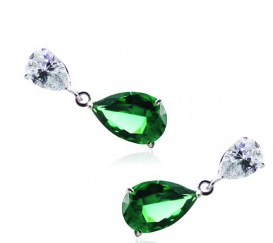Professional Jeweller, a UK trade publication, recently ran a story noting the increase in colored synthetic gemstones that are impacting what it calls the “mid-market,” that is, commercially priced jewelry.
It’s no surprise that the trade is seeing an increase in demand for synthetic gemstones during a period when people are extremely cost conscious. And, it’s important to note that there is nothing “bad” about synthetic stones. They can be made into beautiful jewelry and provide a low cost alternative to natural gemstones.
But in a market where we’re seeing more synthetic gemstones, it’s important for pearl and bead stringers to understand a couple of gemological concepts that can help when discussing gemstones with clients.
Natural vs Synthetic Gemstones
Natural gemstones occur, as implied, in nature. Natural gemstones may be treated in various ways to enhance their appearance and improve stability, but these treatments are usually detectable by experienced gemologists.
Synthetic gemstones are man-made. They’re grown in laboratories and have the same basic properties as natural gemstones. This means they have the same basic chemical structure, refractive index, specific gravity, chemical composition, colors and other characteristics.
Gemologists use the same tests on natural and synthetic stones so high quality synthetics are extremely difficult to identify. Some gemologists assert, in fact, that high quality synthetics are impossible to identify when they’re already set in jewelry.
Gemstone Simulants
Although some use the terms simulants and synthetics interchangeably, they refer to two entire different categories in gemology. A simulant is a man-made material that is used to substitute for a natural gemstone. A common example of a simulant is cubic zirconia or moissanite for diamonds. Another common simulant is the substitution of synthetic blue spinel or synthetic blue topaz for aquamarines.
Remember, both synthetics and simulants are man-made. Synthetics duplicate the characteristics of natural gemstones and when high quality are extremely difficult to detect. In the picture above, for example, the emeralds have fissures, which are characteristic of natural emeralds. Simulants substitute for natural gemstones.
Again, there’s nothing bad or wrong about buying, wearing or selling synthetics and simulants. The key is disclosure. Your clients must be told what they’re buying.


